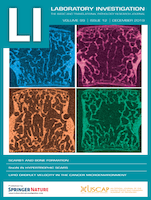
LABORATORY INVESTIGATION
Scope & Guideline
Elevating Standards in Laboratory Investigation
Introduction
Aims and Scopes
- Disease Mechanisms and Pathogenesis:
Research articles that elucidate the underlying mechanisms of various diseases, including genetic, molecular, and cellular pathways that contribute to disease development and progression. - Diagnostic Innovations and Methodologies:
Studies that introduce and validate new diagnostic approaches, including advancements in molecular pathology, histopathology, and cytology, aiming to improve diagnostic accuracy and patient outcomes. - Clinical Applications of Laboratory Findings:
Research that connects laboratory findings to clinical practice, highlighting the implications of laboratory discoveries for patient management, treatment protocols, and prognostic assessments. - Translational Research:
Articles focused on the translation of laboratory research into clinical practice, including the development of biomarkers and targeted therapies. - Technological Advancements in Pathology:
Papers discussing the application of new technologies, including artificial intelligence and digital pathology, to enhance diagnostic processes and improve laboratory efficiency.
Trending and Emerging
- Artificial Intelligence and Machine Learning Applications:
There is a growing trend towards the use of AI and machine learning in pathology, particularly for diagnostic purposes, image analysis, and predictive modeling, showcasing the integration of technology in laboratory settings. - Genomic and Molecular Characterization:
Research focusing on the genomic and molecular profiling of tumors is on the rise, reflecting a shift towards precision medicine and personalized treatment strategies. - Immune Microenvironment Studies:
Investigations into the tumor immune microenvironment, including the role of immune cells and biomarkers in cancer prognosis and treatment response, are increasingly prominent. - Liquid Biopsy and Non-Invasive Diagnostic Techniques:
The development and validation of liquid biopsy methods for cancer detection and monitoring are emerging as significant areas of research, offering less invasive alternatives to traditional tissue biopsies. - Integrated Multi-Omics Approaches:
There is an increasing emphasis on studies that utilize integrated multi-omics approaches (genomics, proteomics, metabolomics) to gain comprehensive insights into disease mechanisms and treatment responses.
Declining or Waning
- Traditional Histopathology Techniques:
There has been a noticeable decline in publications centered on classical histopathological methods, as newer technologies and methodologies, such as digital pathology and AI-assisted techniques, gain prominence. - Basic Science Studies Without Clinical Relevance:
Research that lacks a clear clinical application or translational aspect is increasingly less favored, with a growing emphasis on studies that connect laboratory findings with patient care. - Single-Method Studies:
Papers focusing solely on single-method approaches without integration of multi-omics or interdisciplinary perspectives are becoming less common, as the field moves towards more comprehensive and integrated research frameworks. - Non-Disease-Specific Laboratory Research:
Research that does not directly address specific diseases or clinical conditions has seen a decrease, as journals prioritize studies with clear clinical implications and relevance.
Similar Journals

Human Gene
Unlocking the Secrets of Our DNAHuman Gene is an innovative open access journal published by ELSEVIER, dedicated to the ever-evolving field of genetics. Established in 2022, this journal serves as a vital resource for researchers, professionals, and students alike, aiming to facilitate the dissemination of groundbreaking research and advancements in both basic and clinical genetics. With an ISSN of 2773-0441, Human Gene focuses on providing a platform for high-quality studies that investigate genetic mechanisms, their implications in health and disease, and novel therapeutic strategies. The journal currently holds a Q4 ranking in both Genetics and Clinical Genetics categories, reflecting its emerging status within the scientific community, and strives to enhance its impact to better serve an engaged audience. With its base in Amsterdam, Netherlands, Human Gene is committed to making research accessible through its open access model, inviting contributions that advance our understanding of human genetics and foster collaboration across disciplines.
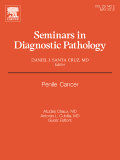
SEMINARS IN DIAGNOSTIC PATHOLOGY
Exploring the frontiers of diagnostic pathology.Seminars in Diagnostic Pathology is a premier journal that has established itself as an essential resource in the field of pathology since its inception in 1984. Published by W B Saunders Co-Elsevier Inc, this journal boasts an impressive Q1 ranking in the pathology category for 2023, placing it in the top tier of medical journals worldwide. With a focus on diagnostic pathology, it offers a platform for groundbreaking research and advancements that bridge the gap between basic science and clinical practice. The journal is committed to publishing high-quality review articles, case reports, and expert opinions that provide valuable insights for professionals, researchers, and students alike. Although it operates on a subscription model, the journal's extensive impact is reflected in its Scopus rank (#56/208), with a remarkable 73rd percentile standing in the pathology and forensic medicine category. The journal's authoritative content not only aids in enhancing knowledge but also fosters an understanding of the evolving challenges and methodologies in diagnostic pathology, making it an indispensable tool for anyone dedicated to excellence in the field.

IN VIVO
Fostering scientific excellence in biochemistry and cancer studies.IN VIVO is a prestigious academic journal published by the International Institute of Anticancer Research, dedicated to advancing the fields of biochemistry, genetics, molecular biology, cancer research, and pharmacology. With its ISSN 0258-851X and E-ISSN 1791-7549, this journal has been a key contributor to innovative research since its inception in 1987, providing a crucial platform for the dissemination of significant findings in its scope. With an impressive impact reflected in its quartile rankings (Q2 in Biochemistry, Genetics and Molecular Biology and Medicine; Q3 in Cancer Research and Pharmacology), IN VIVO reaches a global audience comprising researchers, health professionals, and students. Although it operates on a subscription basis, the journal’s commitment to scientific excellence and rigorous peer review ensures that all published works maintain high quality and relevance. Notably positioned in Scopus ranks within the 36th to 59th percentiles across various categories, IN VIVO continues to be a vital resource for cutting-edge research and developments, solidifying its importance within the scientific community.
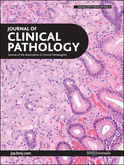
JOURNAL OF CLINICAL PATHOLOGY
Transforming Findings into Clinical PracticeJOURNAL OF CLINICAL PATHOLOGY, published by BMJ PUBLISHING GROUP, stands at the forefront of advancements in the field of clinical pathology, offering a platform for groundbreaking research and insights from 1948 to the present. With an impressive impact factor and categorized as Q1 in both Medicine (miscellaneous) and Pathology and Forensic Medicine for 2023, the journal holds a distinguished position in the academic community, ranking 22nd out of 208 journals in its category on Scopus and representing the 89th percentile. While the journal does not currently offer open access, it remains a vital resource for researchers, healthcare professionals, and students seeking to stay current with innovative methodologies, clinical techniques, and diagnostic advancements. Located in London, United Kingdom, the journal aims to bridge the gap between laboratory findings and clinical practice, emphasizing the importance of evidence-based pathology in improving patient care and treatment outcomes. Engage with the JOURNAL OF CLINICAL PATHOLOGY to enhance your understanding and contribute to the evolving landscape of clinical pathology research.
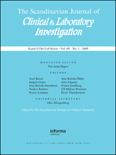
SCANDINAVIAN JOURNAL OF CLINICAL & LABORATORY INVESTIGATION
Advancing clinical insights since 1949.The Scandinavian Journal of Clinical & Laboratory Investigation is a premier publication in the fields of clinical biochemistry and laboratory medicine, published by Taylor & Francis Ltd in the United Kingdom. With an ISSN of 0036-5513 and E-ISSN 1502-7686, this journal has been a vital source of scholarly articles since its inception in 1949, and is set to celebrate over seventy-five years of contributing to scientific knowledge in 2024. Ranked in the Q2 category for both Clinical Biochemistry and Medicine (Miscellaneous), it holds a robust position within the Scopus rankings, with a commendable rank of 77/117 in its discipline. The journal is dedicated to advancing research by offering a platform for high-quality studies that explore the development and application of clinical and laboratory investigations, making it essential reading for researchers, practitioners, and students interested in the latest advances and methodologies in the field. Although it does not currently offer Open Access, a wealth of valuable research insights awaits readers within its pages, highlighting its crucial role in fostering communication and innovation in clinical sciences.
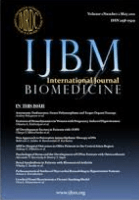
International Journal of Biomedicine
Fostering interdisciplinary dialogue in biomedical research.International Journal of Biomedicine, published by INT MEDICAL RESEARCH & DEVELOPMENT CORP, is a premier Open Access journal dedicated to advancing knowledge in the multifaceted fields of biomedicine, including but not limited to biochemistry, genetics, immunology, microbiology, and neuroscience. With its ISSN 2158-0510 and E-ISSN 2158-0529, this journal has been serving as a significant platform for researchers since its inception in 2011, ensuring the dissemination of high-quality, peer-reviewed articles. Despite currently holding a Q4 ranking in prominent categories such as Biochemistry, Genetics and Molecular Biology and Neuroscience, the journal plays a vital role in fostering scientific dialogue and innovation in these rapidly evolving domains. The journal's commitment to accessibility further empowers both seasoned professionals and budding scholars to contribute to, and benefit from, the wealth of research that characterizes the biomedicine landscape. With a significant emphasis on interdisciplinary approaches and contemporary issues, the International Journal of Biomedicine is an essential resource for those aiming to navigate the complex intersections of health, disease, and biomedical discovery.
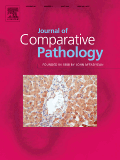
JOURNAL OF COMPARATIVE PATHOLOGY
Innovating Understanding in Veterinary SciencesJOURNAL OF COMPARATIVE PATHOLOGY, published by Elsevier Science Ltd, stands as a significant publication within the fields of pathology and forensic medicine, as well as veterinary studies. With an ISSN of 0021-9975 and an E-ISSN of 1532-3129, this journal has been disseminating critical research since 1950, contributing to the advancement of knowledge through its focus on comparative pathology. The journal's reputable standing is underscored by its Q3 classification in Pathology and Forensic Medicine and Q2 in Veterinary (miscellaneous) for 2023, reflecting its vital role in shaping contemporary discourse in these domains. The Scopus ranks further solidify its presence, placing it at the 51st percentile in general veterinary sciences and the 32nd percentile in pathology—a testament to the quality and relevance of the contributions it publishes. Although it operates under a subscription model, the journal remains accessible to researchers and practitioners who aim to deepen their understanding of pathological phenomena across species, enhance diagnostic accuracy, and improve clinical practices. With a steadfast commitment to rigorous peer review and a global readership, the JOURNAL OF COMPARATIVE PATHOLOGY is an essential resource for those engaged in research and professional practice, fostering collaborations and innovations that bridge complementary areas of study.
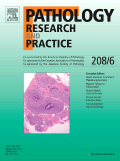
PATHOLOGY RESEARCH AND PRACTICE
Exploring the Depths of Pathology and Forensic MedicinePATHOLOGY RESEARCH AND PRACTICE is a premier journal in the field of pathology and forensic medicine, published by Elsevier GmbH in Germany. With a rich publication history since 1978 and an impressive convergence period extending to 2024, this journal serves as a vital resource for researchers and professionals dedicated to advancing the understanding of pathological processes. It holds notable rankings, including Q3 in Cell Biology and Q2 in Pathology and Forensic Medicine for 2023, reflecting its significance in the academic community. The journal aims to publish innovative research findings, reviews, and case studies, facilitating a deeper understanding of disease mechanisms and improving diagnostic practices. Authors and readers alike benefit from its reputable platform, noted for its challenging and rigorous peer-review process. By fostering a collaborative environment and providing open access options, PATHOLOGY RESEARCH AND PRACTICE continues to contribute meaningfully to the discourse within its respective fields, thereby appealing to a diverse audience of researchers, professionals, and students.

Respiratory Investigation
Shaping tomorrow's respiratory practices today.Respiratory Investigation is a leading peer-reviewed journal published by Elsevier, dedicated to advancing the field of Pulmonary and Respiratory Medicine. Since its inception in 2012, the journal has grown to become a vital resource for researchers, clinicians, and students alike, providing a platform for high-quality research articles, reviews, and clinical studies. With a commendable impact factor and ranked in the Q2 category of Scopus' 2023 metrics, it stands at rank #57 out of 155 in its field, illustrating its importance and influence within the academic community. Although the journal operates on a subscription basis, it remains committed to disseminating essential findings that enhance the understanding and treatment of respiratory diseases. Set against the innovative backdrop of the Netherlands, Respiratory Investigation not only serves as a conduit for scholarly exchange but also plays a critical role in shaping future research directions and clinical practices.
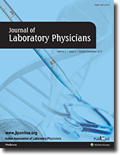
Journal of Laboratory Physicians
Empowering laboratory physicians with essential knowledge.The Journal of Laboratory Physicians is a prestigious, peer-reviewed publication dedicated to advancing the field of laboratory medicine. Published by THIEME MEDICAL PUBL INC, this journal has established itself as a vital source of research and clinical insights since its inception, transitioning to Open Access in 2009 to broaden its reach and accessibility. With an ISSN of 0974-2727 and an E-ISSN of 0974-7826, it aims to provide a platform for professionals, researchers, and students engaged in laboratory-based studies to share critical findings and foster collaboration across disciplines. The journal's scope encompasses a wide range of topics relevant to laboratory physicians, ensuring that it remains an essential resource for those seeking to stay on the cutting edge of laboratory practices and innovations. By disseminating timely research and reviews, the Journal of Laboratory Physicians plays a crucial role in enhancing the quality of healthcare through improved laboratory services.